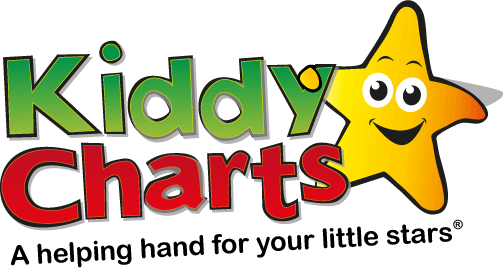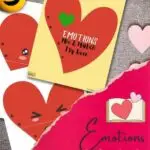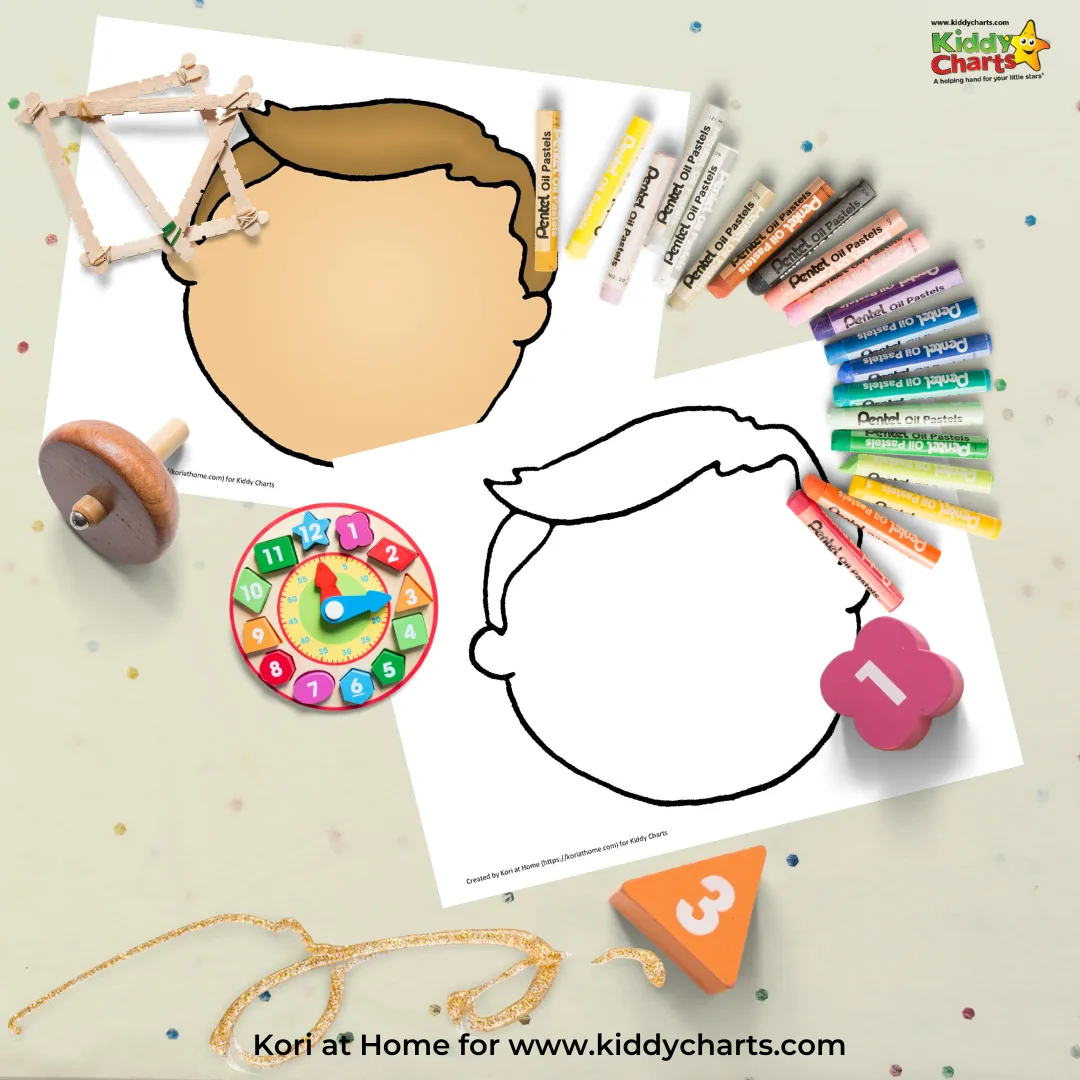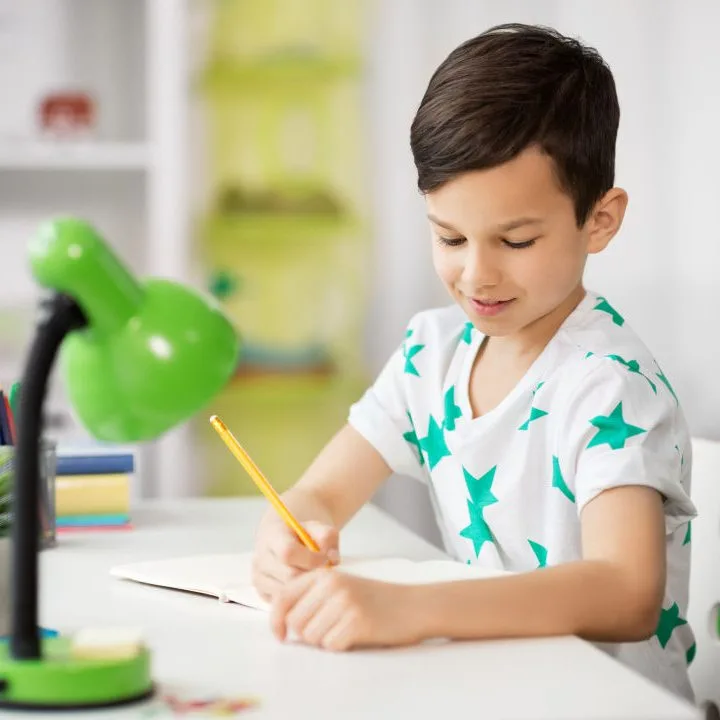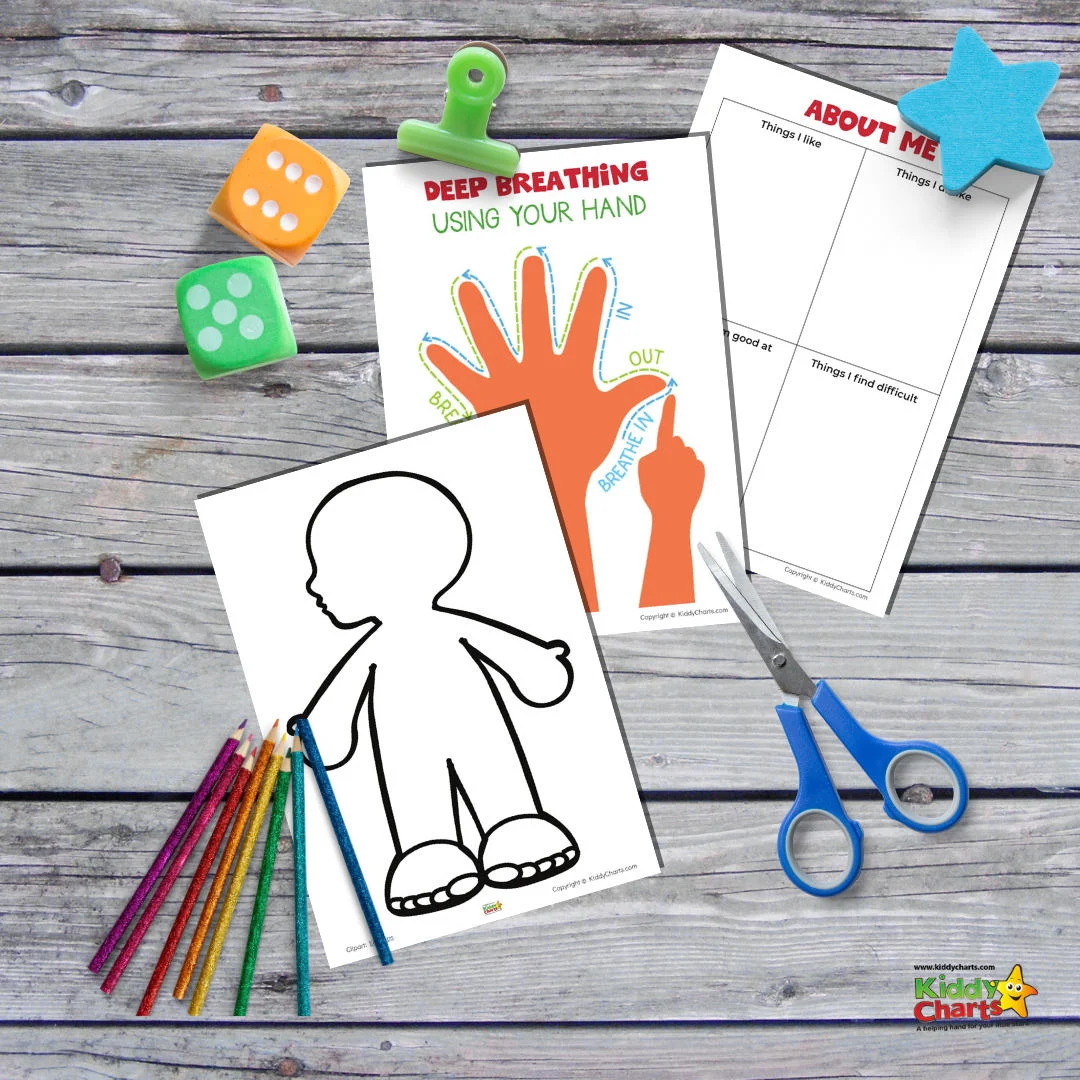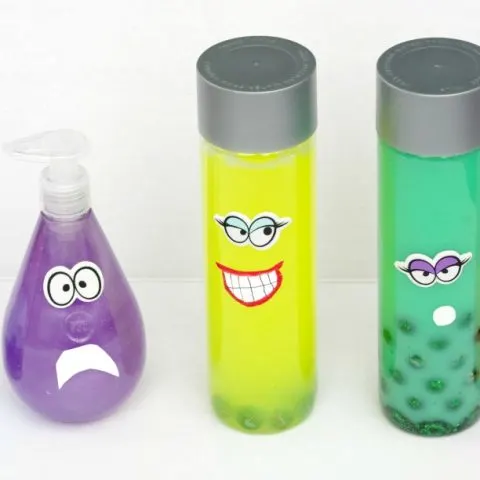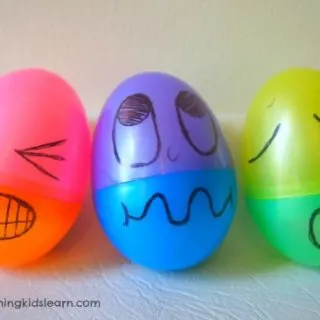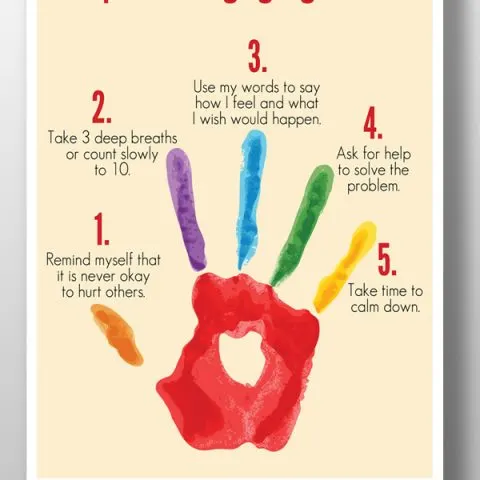We have shared ways with which to engage with your kids and their emotions on KiddyCharts before, and they are always popular. This emotion book for kids is a fun, and simple activity that we start the conversation about emotions with children from a young age.
This can be used in conjunction with other resources too of course; from helping to talk about worries through our worry tree, to helping kids to understand their big feelings. Today we are sharing a fun flip book that will assist kids with talking about emotions.

How to make the emotion book with your kids or classroom
Our workbook consists of 20 pages, including front and back covers for the flip book, covering a range of emotions using a simple heart face, and standard emoticon expressions that even younger children may be familiar with.
However, if they aren’t you can work through them one by one and talk about them all.
In order to use the book, you need to follow the following instructions:
- Download the activity (scroll to the button below), and then print it out on cardboard or perhaps even photo paper,
- Cut out each of the hearts along the outlines,
- Cut through the dotted line on each of the hearts, but do take care not to cut the front and back pages of your flip book,
- Laminate the pages if you want the book to last a while, it does work with cardboard, but it is much more long-lasted if you laminate as always,
- Punch holes on the four marked areas on each of the hearts
- Stack them together, using the top and bottom hearts as your foundation; front and back,
- Secure them into this stack using either metal rings, or by tie-ing them together using a nice pink ribbon, and
- Now you are ready to play. See below for ideas of how to use this, and now
- Enjoy!
What emotions are included within the flip book?
You can, of course, decide which emotion is which for yourself, as long as you stick to them when you are discussing those big feelings. However, if you need a little help, here are some ideas for you:
- Page 4: Exhausted
- Page 5: Shy
- Page 6: Happy
- Page 7: Confused
- Page 8: In love
- Page 9: Mischievous / Cheeky (winking face!)
- Page 10: Sad
- Page 11: Angry
- Page 12: Upset (crying)
- Page 13: Embarrassed
- Page 14: Overwhelmed (crying a lot!)
- Page 15: Excited
- Page 16: Dizzy
- Page 17: Worried
- Page 18: Overwhelmed, and
- Page 19: Frustrated.
What do the emoticons within the book look like?
As always, we want you to know what you are getting when you make that decision to click and download this resource for free.



These are the designs from page 5 and page 7 representing shy and confused for children.
We are sure that it is clear from these examples both how to make the book, and also how cute these little heart emoticons are for this activity as well.
How to use the emotion book
This flip emotions book can be used in a number of different ways for the children:
- Just use as a simple and fun activity, mixing and matching the faces, and having a lot of fun doing it! We have a couple of blank hearts at the end of the book for children to write their own ideas on of course,
- Using the blank hearts, you can cut out some of the other eyes and mouths, and make your own faces too, giving kids a chance to explore the flip book in a completely different way,
- Alternatively, laminate the last three blank sheets alongside the other pages, and kids can use a wipe-able marker to add their own eyes and mouth and explore emotions through the blank hearts. Some prompt for this might be:
- What might you see if someone is sad?
- I see you have drawn an angry face: what makes you angry?
- This heart looks a little overwhelmed to me. What do you do that helps when you are feeling overwhelmed?
- Talk about all the emotions as you move through the flip book, discussing what makes your child happy, sad, overwhelmed, etc, and
- Ask them to choose the flip book pages for specific emotions after you have helped them understand which ones are which (for older children, c. 6+).
There are, we are sure, loads more ideas, but here are some of them for you to use to get started with the resource.
In order to download it, just click on the button below, and it is yours!
We hope that you like this tool for use with preschoolers, and up to middle school too, depending on how you discuss the emotions featured. If you would like more resources on emotions on KiddyCharts, do check out our mindfulness section, as well as these articles too:
Here are some other ideas to help children to understand and cope with their feelings and emotions.
How to help your kids recognise their emotions: Free printable #31DaysOfLearning
A printable to help kids understand what feelings they are having.
Anxiety in kids
Ideas from KiddyCharts to help with kids expressing themselves, and focusing on improving mental health.
Positive writing prompts for kids emotional development #31DaysOfLearning
Writing prompts for children that focus on feelings, and emotional development.
31 Days Of Learning
Find all of our 31 Days of Learning events on one page! Print out our calendar and work your way through each activity! Have fun!
Friendship mindful activity for kids: Friends who lift my spirits most
Simple mindful activities for kids focusing on friends that lift us up.
How about these other ideas outside our site as well?
Activities to help your kids with their emotions
If you need more ideas to help your kids deal with their emotions then these posts are worth checking out and trying out.
Emotions Discovery Bottles Inspired By Disney’s Inside Out
Help your kids recognise their emotions with these fun emotions discovery bottles inspired by Disney's Inside Out.
Tool for teaching emotions in kids
Use these tools to help teach kids about emotions.
5 Steps to Managing Big Emotions: Printable
Join teacher Christie Burnett in this post where she shares 5 steps to managing big emotions in kids. There's also a free printable!
If you would like to get our articles in your inbox, sign up for our newsletter:
Thanks as always for coming to see us, and we really hope that we can have you back on the site again soon too.
Helen

